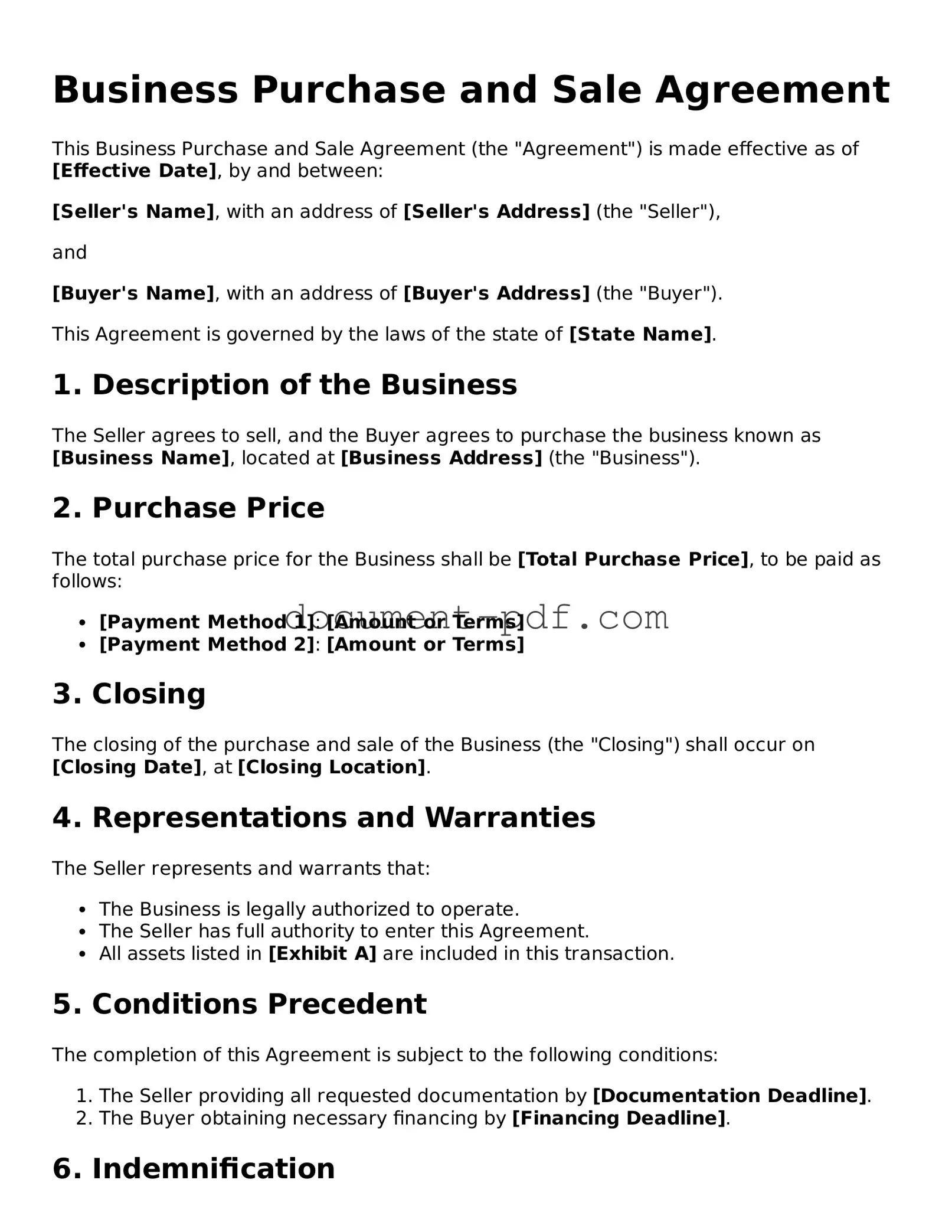Business Purchase and Sale Agreement
This Business Purchase and Sale Agreement (the "Agreement") is made effective as of [Effective Date], by and between:
[Seller's Name], with an address of [Seller's Address] (the "Seller"),
and
[Buyer's Name], with an address of [Buyer's Address] (the "Buyer").
This Agreement is governed by the laws of the state of [State Name].
1. Description of the Business
The Seller agrees to sell, and the Buyer agrees to purchase the business known as [Business Name], located at [Business Address] (the "Business").
2. Purchase Price
The total purchase price for the Business shall be [Total Purchase Price], to be paid as follows:
- [Payment Method 1]: [Amount or Terms]
- [Payment Method 2]: [Amount or Terms]
3. Closing
The closing of the purchase and sale of the Business (the "Closing") shall occur on [Closing Date], at [Closing Location].
4. Representations and Warranties
The Seller represents and warrants that:
- The Business is legally authorized to operate.
- The Seller has full authority to enter this Agreement.
- All assets listed in [Exhibit A] are included in this transaction.
5. Conditions Precedent
The completion of this Agreement is subject to the following conditions:
- The Seller providing all requested documentation by [Documentation Deadline].
- The Buyer obtaining necessary financing by [Financing Deadline].
6. Indemnification
Both parties agree to indemnify and hold harmless the other from any claims arising from this Agreement.
7. Governing Law
This Agreement shall be governed by and construed in accordance with the laws of the state of [State Name].
8. Miscellaneous
This Agreement constitutes the entire understanding between the parties. Amendments must be in writing and signed by both parties.
IN WITNESS WHEREOF, the parties have executed this Business Purchase and Sale Agreement as of the date first above written.
______________________________
[Seller's Name]
______________________________
[Buyer's Name]
